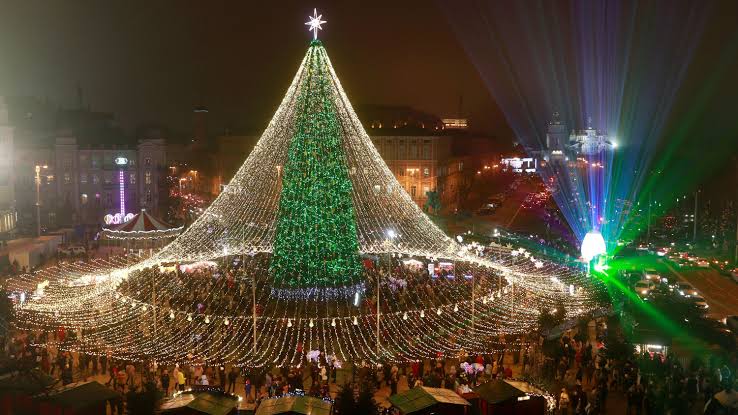Christmas, celebrated annually on December 25th, is one of the most cherished holidays worldwide. Discover the Secret Magic of Christmas: From Ancient Roots to Modern Revelry
Rooted in Christian traditions commemorating the birth of Jesus Christ, it has evolved over centuries into a multifaceted celebration. Today, it is a time for family gatherings, gift-giving, festive meals, and decorations, blending religious observance with cultural and secular practices.
The Origins: From Pagan Festivas to Christian Tradition
Pagan Roots of Christmas
Before Christ-mas took its place in the Christian calendar, ancient cultures marked the winter solstice with festivities celebrating renewal and the return of light. These pagan traditions laid the groundwork for many customs associated with Christmas today.
- Saturnalia: A Roman festival held December 17–23, Saturnalia honored Saturn, the god of agriculture. It was a time of feasting, gift-giving, and social role reversals, bringing joy and indulgence during the dark winter days.
- Yule: In Northern Europe, Germanic and Norse peoples celebrated Yule with feasts, bonfires, and the burning of the Yule log. This practice symbolized warmth and hope during the coldest time of the year.
- Sol Invictus: December 25th was celebrated in ancient Rome as the birth of Sol Invictus, the “Unconquered Sun.” This festival signified the victory of light over darkness as the days began to lengthen.
Christianity’s Integration of Pagan Traditions
As Christianity spread, early church leaders sought to integrate these existing solstice festivals into Christian teachings.
- December 25th: In 336 AD, the Roman Church declared December 25th the official date to celebrate Jesus’ birth. This strategic choice aligned with the popular pagan celebrations, making the transition to Christianity smoother for converts.
- The Nativity Story: Central to Christian Christmas celebrations, the Nativity story recounts Jesus’ birth in Bethlehem, symbolizing hope, light, and salvation. Found in the Gospels of Matthew and Luke, remains a cornerstone of Christmas traditions.
Why Do We Celebrate Christmas?
Christmas was established as a holiday to honor the birth of Jesus Christ, “the light of the world.” Beyond it also symbolize love, generosity, and unity.
- Religious Significance: Christ-mas services, carols, and Nativity plays center on the spiritual meaning of Jesus’ birth and its message of hope.
- Cultural and Secular Importance: For many, Christ-mas is a time to reconnect with family, share gifts, and create cherished memories.
The Heart of Christmas: Traditions and Symbols
Religious Observances
- Advent: The weeks leading up to Christmas, known as Advent, mark a period of preparation and reflection. Families use Advent calendars or wreaths to count down the days until Christmas.
- Christmas Eve Services: Candlelight services and carol singing are central to many religious celebrations, which emphasizes the spiritual significance of the holiday.
Family and Togetherness
- Reunions: Many people travel great distances to spend the holidays with loved ones.
- Gift-Giving: Inspired by the Magi and St. Nicholas, exchanging gifts has become a universal symbol of generosity and love.
Festive Decorations
- Christ-mas Trees: Adorning evergreen trees with ornaments and lights dates back to 16th-century Germany. This custom has become a hallmark of Christmas worldwide.
- Nativity Scenes: Depicting Jesus’ birth, Nativity scenes serve as a visual reminder of the holiday’s religious origins.
- Light Displays: Homes, neighborhoods, and public spaces come alive with festive lights, fostering a sense of wonder and community.


Christmas Around the world
United States
In the U.S., Christmas is a mix of religious traditions and commercial enthusiasm. Santa Claus, inspired by St. Nicholas, is a central figure. Families often decorate homes elaborately, exchange gifts, and prepare festive meals. Black Friday marks the unofficial start of the holiday shopping season, reflecting the holiday’s economic significance.
In America, Christmas blends religious observance with secular customs:
- Santa Claus: The figure of Santa Claus has become synonymous with American Christmas culture:
- Based on St. Nicholas, a 4th-century Greek bishop—Santa is depicted as a jolly man who delivers gifts on Christmas Eve.
- Holiday Music: Seasonal music plays an essential role in setting the festive mood:
- Classic carols like “Jingle Bells” and “Deck the Halls” are widely sung.
- Modern songs such as “All I Want for Christmas Is You” have become holiday staples.
- Commercialization: The holiday season has become heavily commercialized:
- Retailers promote sales starting on Black Friday (the day after Thanksgiving) leading up to Christmas.
- Holiday-themed advertisements are ubiquitous during this time.

Mexico
Mexicans celebrate Las Posadas from December 16th to 24th, reenacting Mary and Joseph’s search for shelter. This vibrant tradition includes caroling, piñatas, and feasts featuring tamales and bacalao (salted cod). On Christ-mas Eve, families gather for a grand meal and attend Midnight Mass.
In Mexico, Christmas celebrations blend Catholic traditions with indigenous customs:
- Las Posadas: This nine-day celebration from December 16th to 24th reenacts Mary and Joseph’s search for shelter:
- Participants go from house to house singing carols until they reach a designated home where they celebrate with food and festivities.
- Nochebuena (Christmas Eve): Families gather for a late-night feast on December 24th:
- Traditional dishes may include tamales and bacalao (salted cod).
- Piñatas: Piñatas shaped like stars are commonly used in celebrations:
- Filled with candy and treats, they symbolize temptation; breaking them represents overcoming sin.

Italy
Italian Christmas traditions emphasize religious devotion and culinary delights. La Vigilia (Christmas Eve) is celebrated with the Feast of Seven Fishes, a meal of seven seafood dishes. Elaborate Nativity scenes, or presepi, adorn homes and churches, and games like Tombola bring families together.
Italy boasts rich culinary traditions associated with Christmas:

- Feast of the Seven Fishes: On Christmas Eve (La Vigilia), Italian-Americans often prepare seven different fish dishes:
- This meal reflects Catholic customs of abstaining from meat before significant feast days.
- Presepi (Nativity Scenes): Elaborate nativity scenes are common in Italian homes:
- Naples is particularly famous for its artisan-crafted presepi featuring intricate details.
- Tombola: A traditional game similar to bingo played during family gatherings:
- Players use cards marked with numbers drawn from a pool; winners receive small prizes or treats.
Japan

In Japan is a secular celebration centered on fun and romance. Couples exchange gifts and enjoy fancy dinners. A unique tradition involves eating KFC, popularized by a 1970s marketing campaign. Stunning illuminations light up cities, attracting crowds to festive displays.
While not traditionally Christian, Japan has embraced certain aspects of Christmas:
- Secular Celebration: In Japan, Christmas is celebrated more as a festive occasion than a religious one:
- Couples often enjoy romantic dinners or exchange gifts rather than focusing on family gatherings.
- KFC Tradition: A marketing campaign in the 1970s popularized eating KFC on Christmas Day:
- Many families pre-order buckets of fried chicken as part of their celebration.
- Illuminations: Cities across Japan host stunning light displays during the holiday season:
- These illuminations attract tourists and locals alike who enjoy walking through beautifully lit parks and streets.
Ukraine
Ukrainian Orthodox Christians celebrate Christ-mas on January 7th. Sviata Vecheria (Holy Evening) on January 6th includes a meal of twelve meatless dishes, symbolizing the apostles. Caroling and the Didukh (a sheaf of wheat symbolizing ancestors) are key elements of their celebration.
Ukrainian Orthodox Christians celebrate Christ-mas on January 7th due to adherence to the Julian calendar:
It is often placed in a prominent location at family gatherings.
Sviata Vecheria (Holy Evening): On January 6th (Christmas Eve), families gather for a special meal featuring twelve meatless dishes:
Dishes may include kutya (a sweet grain pudding) made from wheat mixed with honey and poppy seeds.
Caroling Traditions: Caroling is an essential part of Ukrainian celebrations:
Groups known as “koliadnyky” visit homes singing carols in exchange for treats or money.



Didukh (Wheat Sheaf): A sheaf of wheat called Didukh symbolizes ancestors’ spirits being welcomed into homes during this time.
Germany
Germany is the birthplace of many Christmas traditions, including the Christmas tree and Advent calendars. Weihnachtsmärkte (Christmas markets) are central to the holiday season, offering handcrafted gifts, mulled wine, and festive treats.
Philippines
In the Philippines, Christmas begins as early as September. Celebrations include Simbang Gabi (a nine-day series of Masses) and colorful parol lanterns, symbolizing the Star of Bethlehem. Families gather for Noche Buena, a feast enjoyed after Midnight Mass on Christ-mas Eve.
Australia
In Australia coincides with summer. Traditions include outdoor barbecues, beach picnics, and events like Carols by Candlelight. Santa Claus is often depicted in summer attire, reflecting the warm weather.
Commercialization of the holiday
- Retail Boom: The holiday season drives a surge in consumer spending, with Black Friday and Cyber Monday playing pivotal roles.
- Global Influence: Non-Christian countries adopt Christmas elements, creating unique blends of tradition and modernity.
- Technology and Giving: Online shopping and charitable donations make celebrating and giving back easier than ever.










Join our Channel...